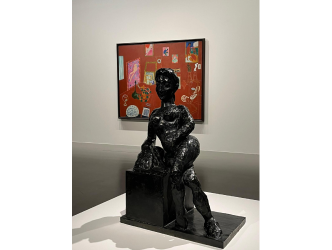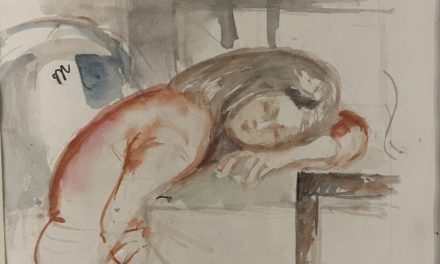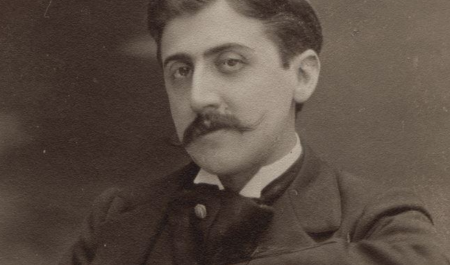
François Boucher
Mass sanitization
These are times of mass sanitization. Long before we wore masks and handwashing justifiably became a global obsession, in another field the presence of sex in art was banished from the major themes of exhibitions in the Anglo-Saxon world. Beyond the little isle of French exception, a whole swath of visual sensuality is no longer being given a platform.
Voluptuous feminine forms
But the 19th century, among others, was saturated with voluptuous feminine forms which were very characteristic of the style of the Pompier painters who inhabit American museums in large numbers. Despite this richness, I was recently told by an American curator – a specialist on the subject – that dedicating a show to Cabanel with his porcelain-skin Venuses and his peers who hid behind mythological themes to talk about eroticism, was nowadays impossible.
Taboos of money and sex

Jean-Baptiste Pater
The subject is no longer welcome. There’s an old idea that sums it up which says that in France money is taboo and in Anglo-Saxon countries sex is taboo.
Crowned with a huge phallus

Pablo Picasso
See, for example, the exhibition that took place jointly in London and Paris in 2018 dedicated to Picasso’s work dating from 1932. We know that in at least one of his paintings ” Le rêve” (The dream), the Malaga master didn’t hesitate to portray Marie-Thérèse as a gloriously sensual figure, crowned with a huge phallus embedded in the curves of her head. Which just goes to show that the title of the exhibition, “Picasso: 1932, année érotique” (Picasso: 1932, the erotic year) chosen by the Picasso Museum in Paris, was justified.
The more prudish Tate
But the more prudish Tate in London gave the exhibition a less explicit title: “Picasso 1932: love, fame, tragedy”(1).
Above the crotch

Pablo Picasso
Still on the subject of Picasso, and even earlier, Sotheby’s sold his “Garçon à la pipe” (Boy with a Pipe) from 1905 in New York in 2004, a work that is ambiguous in its genre, since the androgynous young man depicted exudes a powerful sense of seduction. Picasso usually triumphs, we must recall, in his portrayal of feminine attraction. The auction house decided to reproduce the work on the cover of the sale catalogue, but not in its entirety. The image was cut off above the subject’s crotch. Why? The bulge that fills out the trousers of the charming young man didn’t seem appropriate. We should also point out that “pipe” is French slang for a blow job. The fascinatingly ambiguous painting (crotch included) attained a record price at the time: 104 million dollars.
L’empire des sens

François Boucher
That’s why, in the same spirit, we welcome two French initiatives that seem to be unable to take place anywhere else today. Museums in France are closed until further notice due to the public health crisis. But the Musée Cognacq-Jay will be opening as soon as the authorities allow it with a magnificent exhibition entitled “L’empire des sens, de Boucher à Greuze” (In the Realm of the Senses: From Boucher to Greuze), which I was able to visit.
Explicite panorama

Jean-Honoré Fragonard
It constitutes a subtle yet explicit panorama of this kind of visual creation up until 1775, featuring 120 artworks. Guillaume Faroult, the curator in charge of 18th-century paintings at the Louvre, is simultaneously publishing an enormous reference work on erotic painting in 18th-century France. This a great feat of scholarship on a subject that is often (wrongly) considered to be lightweight.
Guillaume Faroult
In true historian fashion, Guillaume Faroult reminds us that two exhibitions took place across the Atlantic which addressed the subject. In 1997 and 1998 the Hood Museum of Art in Hanover, the Toledo Museum, and the Museum of Fine Arts in Houston staged “Intimate encounters: Love and Domesticity in Eighteenth-Century France”. In 2007 and 2008 the Getty in Los Angeles and the Clark Art Institute in Williamstown exhibited Fragonard’s “Allegories of Love”.
The beloved king

François Boucher
“In 18th-century France, love was not – as it is today – a private matter. King Louis XV himself was nicknamed ‘le bien aimé’, meaning ‘beloved’. He wasn’t the great king or the conquering king. France at the time saw itself as the most sophisticated nation in Europe. The concept of gallantry played a key role there and extolled a certain gentleness. Watteau thus produced a new kind of painting: ‘les fêtes galantes’,” observes the art historian.
Molière and Voltaire too

François Boucher
Writers who were contemporaries of this visual production also approved. Molière, for example, already confirmed the French exception: “The French have something gallant and polite in them, that other nations have not.” And Voltaire proclaimed: “Soon we shall see the grandest of spectacles, this happy century, this century of miracles, this Louis the Great, this court superb, where all the arts are led by love”.
Watteau, Boucher, Fragonard
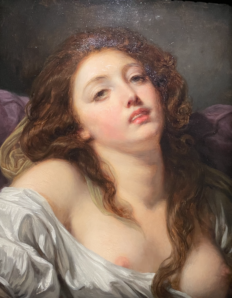

During the period preceding the Revolution, the images of Watteau, Boucher, Fragonard and Greuze would be associated with the words of La Fontaine in his stories, to celebrate “galanterie” with a voluptuous mastery. But as the director of the museum, Annick Lemoine, explains, the exposure of the large majority of paintings in this genre was limited back then to what we would call the boudoirs, the private quarters reserved for pleasures great and small.
Reputation for debauchery

Jean-Honoré Fragonard
In artistic studios, the nude models were generally “women of easy virtue” which gave these dens of creation a reputation for debauchery. The exhibition, like the book, provides an opportunity to admire these paintings, which are not only beautiful but also significant in art history.
Watteau/ Balthus
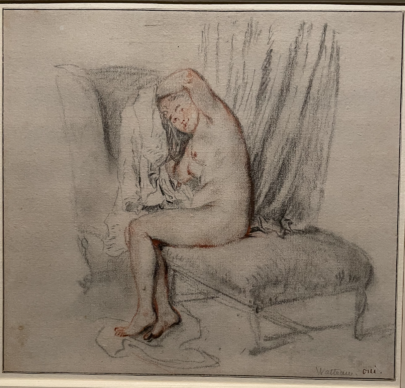
Antoine Watteau
Even in the first room there is a drawing by Watteau that looks as though it’s been directly inspired by Balthus. See also “La résistance inutile”, a couple scene by Fragonard which, through the suggestion of the shapes of the pillows and bolsters, truly foreshadowed Picasso’s erotic work of 1932. Through visiting this exhibition we also understand the fascination of Jeff Koons, a great collector of works from this period.
Buttocks portraits

François Boucher
Here women’s buttocks are almost always central to the compositions, but this doesn’t detract at all from the delicacy of the depictions, like in “La chemise enlevée” painted in pastel tones also by Fragonard in 1770. In around 1745 Boucher produced and even copied for commercial purposes a true “buttocks portrait” which he gave the title “L’odalisque brune”. The subject’s foot, cute and chubby, is also a hero in its own right in the exhibition, especially in the work of Boucher, presiding in the middle of draperies.
Histories that should prove fulfilling – while fully respecting the public health regulations – for scholars, contemplators, and why not aesthete voyeurs.

Jean-Honoré Fragonard

Jean-Honoré Fragonard ( detail)
L’amour peintre. Guillaume Faroult. Edition Cohen&Cohen. 572 pages. 320 illustrations. 160 euros. www.cohen-cohen.fr/l-amour-peintre
L’empire des sens. De Bouchez à Greuze. Musée Cognacq Jay. Muséecognacqjay.paris.fr
(1) Of course in French “1932, année érotique” also refers to a song by Serge Gainsbourg called “69, année érotique”
Support independent news on art.
Your contribution : Make a monthly commitment to support JB Reports or a one off contribution as and when you feel like it. Choose the option that suits you best.
Need to cancel a recurring donation? Please go here.
The donation is considered to be a subscription for a fee set by the donor and for a duration also set by the donor.

